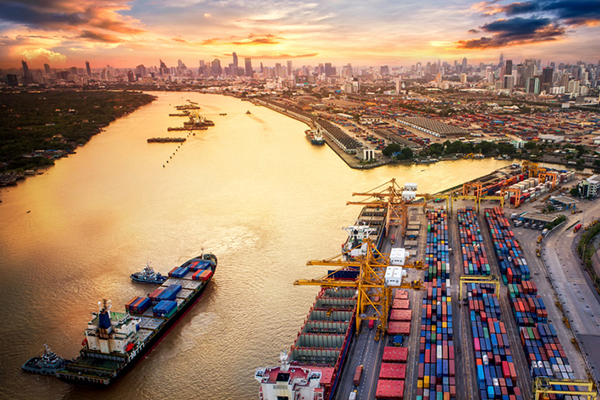While global port congestion is not new to the industry, Drewry Maritime Advisors report the current state of gridlock is becoming critical.
“Tight capacity management and increased blank sailings by carriers,” is part of the problem,” says Drewry. “The pandemic-led lockdowns has further disrupted global trade.
“Across the supply chain, container shipping alliances were the fastest to respond - curtailing services on certain routes or cancelling (blanking) port calls,” Drewry adds. “This has disturbed the containers demand and availability equilibrium at ports.”
In a separate research paper, Resilience360 notes that the situation is especially acute at the Ports of LA and Long Beach.
Following the easing of lockdown restrictions in the U.S. in June, the ports have been operating at maximum capacity to process imports, with yard utilization averaging 80-85 percent, observes Sara Alkawari, Supply Chain Risk Intelligence Analyst at Resilience360
In addition to higher volumes, labor and chassis shortages have contributed to the ongoing congestion which is expected to last into at least December 2020.
Imports from Asia to the Los Angeles-Long Beach port complex reportedly increased by 22 percent in August and September compared to 2019 levels.
However, the increase in import volumes has not been matched by higher operating capacity in terms of equipment and space; the ports have also faced some labor shortages amid the COVID-19 pandemic. In addition, delayed vessel arrivals, as well as a chassis shortage in Southern California, which is expected to continue into 2021, have added to the logistical bottleneck.
“Terminal operators have been forced to stack containers higher and wider in the container yards, which has delayed the release of import containers from the port complex for the final delivery leg to inland destinations,” says Alkawari, “As yard utilization has averaged above 80 percent, the terminals’ capacity to both store and move containers to distribution centers and rail ramps has been severely disrupted. Furthermore, reduced storage capacity at warehouses is likely to lead to further challenges and extended container and chassis dwell times.”
The congestion at the ports has also disrupted trucking operations as turn times for trucks — the time to drop off and pick up a container within the terminal premises — have increased by 33 percent from June to September. The number of trucks needing over two hours to complete the turn has also steadily increased, impacting the overall productivity at the ports.
Finally, as containers remain in the yard for longer, shippers have faced detention and demurrage surcharges by ocean carriers and marine terminals as well as higher spot rates and surcharges for intermodal shipments by rail carriers.
SC
MR


Latest Supply Chain News
- Planning fatigue may be settling in
- Inflation, economic worries among top supply chain concerns for SMBs
- April Services PMI declines following 15 months of growth, reports ISM
- Attacking stubborn COGS inflation with Digital Design-and-Source-to-Value
- Despite American political environment, global geopolitical risks may be easing
- More News
Latest Podcast

 Explore
Explore
Business Management News
- Planning fatigue may be settling in
- Inflation, economic worries among top supply chain concerns for SMBs
- April Services PMI declines following 15 months of growth, reports ISM
- Attacking stubborn COGS inflation with Digital Design-and-Source-to-Value
- Joseph Esteves named CEO of SGS Maine Pointe
- Employees, employers hold divergent views on upskilling the workforce
- More Business Management
Latest Business Management Resources

Subscribe

Supply Chain Management Review delivers the best industry content.

Editors’ Picks





